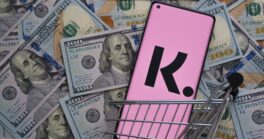Green-bond issuances have been growing, even if there’s no precise definition of what a “green bond” is.
Remember when organic food was a fringe product sold by a few hippies out of burlap sacks? Green bonds are sort of at that stage now. It will take time and some smart governance to turn them into an everyday item on the corporate finance shelf. Still, your company might want to start taking a look now.
There is no legal definition of a green bond yet outside of China, and even there each government agency is pushing its own version. But that hasn’t stopped borrowers around the world from floating them to finance environmentally salubrious projects, or stopped investors from buying. From next to nothing five years ago, global issuance reached $155.4 billion in 2017, according to the Climate Bonds Initiative, and Gennadiy Goldberg, a fixed-income strategist with TD Bank in New York, says it could jump by half again this year. Beneficiaries have ranged from the New York Metropolitan Transit Authority to Taiwanese textile maker Far Eastern New Century Corp., which in January 2017 raised 3 billion Taiwan new dollars ($101.7 million) to reduce its use of petrochemicals. The French government added heft to the market with a €7 billion ($7.5 billion) green bond in January, and Belgium is set to follow suit.
Organic food developed to supply an emerging consumer group with a product that could be sold at a premium. The consumer for green bonds is definitely there, in the form of some $23 trillion earmarked for “socially responsible” investment, according to the Global Sustainable Investment Review. But it’s not clear that bond buyers will be, as are retail food consumers, willing to pay more—that is, buy green bonds at lower interest rates. “If you can meet risk requirements, they will buy in droves,” says Sean Kidney, CEO of the Climate Bonds Initiative in London. “But if you try to jack the price up so investors have to go to their creditors committee, demand falls off a cliff.”
So why bother with a green bond? Image is one reason. “One of the benefits is in your communications with employees, shareholders and others,” says Tanguy Claquin, head of sustainable banking at France’s Crédit Agricole CIB, which borrowed €1.3 billion itself in green markets and in 2015 alone arranged more than $17 billion in placements for clients. Apple, which hardly needs the cash, has tapped the green market for $2.5 billion in a perceived PR exercise. The MTA blanketed hardened New York straphangers with ads about its $500 million 2016 green bond, in an effort to boost public opinion. (“Who ever heard of a bond being advertised on the subway?” Kidney quips.)
But there are real financial advantages as well, says Allan Andersen, head of treasury and risk management for Danish utility Orsted, which issued €1.25 billion in green bonds last November. “The green bond broadens your audience to investors who have SRI mandates,” he says. “That can add flexibility in terms of maturity and size.” Orsted, which is in the process of moving to 100% renewable energy, will stick with green markets from now on, Andersen says.
TD’s Goldberg sees some evidence of green bonds outperforming in post-issue trading, as “demand tends to be larger and more frequently of the buy-and-hold variety.” Having some green borrowing on the books might also attract equity investors, who increasingly weigh sustainability as a long-term criterion, to buying your stock, says Dan Shurey, green-finance specialist at Bloomberg New Energy Finance in New York.
But before the movement goes mainstream, it needs firmer clarity on what makes a green bond green. Certification and monitoring is a freewheeling business these days. Issuers turn for “second opinions” to an amorphous group of private start-up watchdogs with names like Sustainalytics (which works with Crédit Agricole) or CICERO (Orsted). Particularly conscientious borrowers like Orsted instruct their regular corporate auditors to check on how the funds are being used and include that information in financial reports. This system, or lack of a system, is cheap and convenient for companies; Kidney puts the price of greening a bond issue at between $15,000 and $45,000. But the market lives in dread of a “greenwashing” scandal that could puncture confidence. “No regulation can stop you right now from trying to use the green-bond money to improve an oil platform in the Gulf of Mexico because you consider climate-change adaptation,” Crédit Agricole CIB’s Claquin says.
Systemic government regulation is called for, but needs to tread lightly. “They might strangle the market before it picks up,” Shurey warns. The European Union and China are each warming to this challenge in their own way. The EU has formed the High-Level Expert Group on Sustainable Finance to inch toward a consensus framework, using the carbon-reduction principles in the 2015 Paris climate accord as a general guideline. China has let loose an explosion of regulation from different ministries and authorities, which it now needs to harmonize.
China is the first polity to actually incentivize green bonds, Kidney says, by speeding their path to market and giving borrowers preferred access to central-bank financing. As a result, it has grabbed nearly one-third of the global market. The US seems destined to lag behind so long as green skeptic Donald Trump remains president. Most green issuance last year came from state and local governments, led by anti-Trump bastions like New York, Los Angeles and San Francisco.
If governments get it right, global green-bond issuances could mushroom to the $1 trillion range as soon as 2020, Claquin predicts. Utilities will naturally lead the charge on the corporate side, as they raise big sums to shift to cleaner energy. Spain’s Iberdrola, France’s EDF and SSE of Scotland are among the European giants to join Orsted on the green-finance frontier. Transportation (which needs to raise gazillions for climate-friendlier vehicles) and real estate (ditto for smarter buildings) also offer low-hanging fruit for the green-bond movement.
Banks themselves—from Westpac in Australia, to Industrial and Commercial Bank of China to Barclays in London—have issued green debt for on-lending to small-business customers. A few pilot projects point the way to green finance on a mass-market retail scale. Toyota Financial Services has issued four green bonds since 2014, using the proceeds to offer preferential finance on the auto giant’s lower-emission cars.
Bloomberg’s Shurey foresees a future where a great variety of companies could tap green finance for specific sustainability projects, and more companies might undertake those projects as a result of the availability of the green finance. “Borrowers will be able to expand business in some positive directions because there is a reasonable cost of capital,” he says.
That is, if regulators don’t screw it up. “This could be a fad that fizzles out, or it could become a fundamental driver in the future,” Shurey says. People said things like that about organic food once, too.



